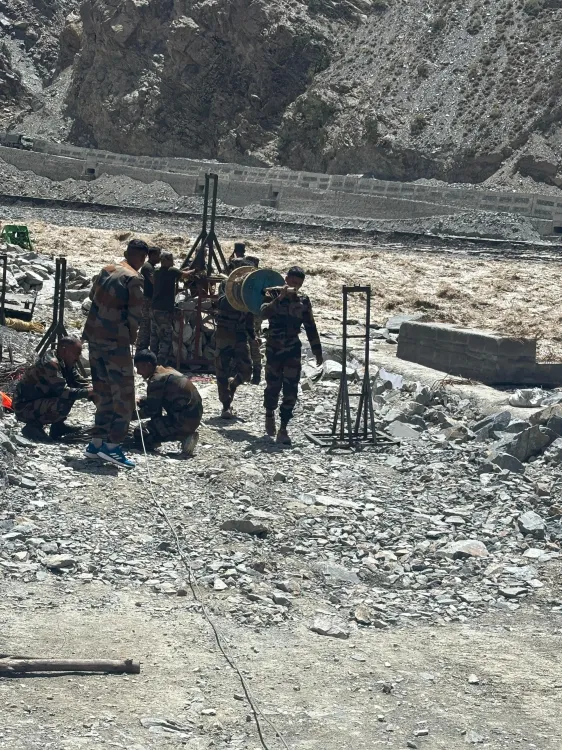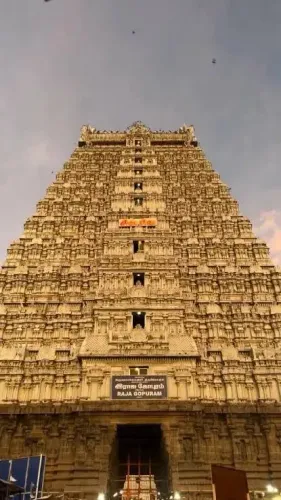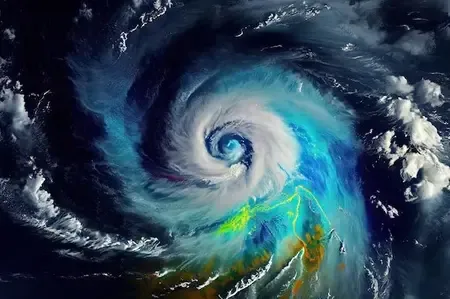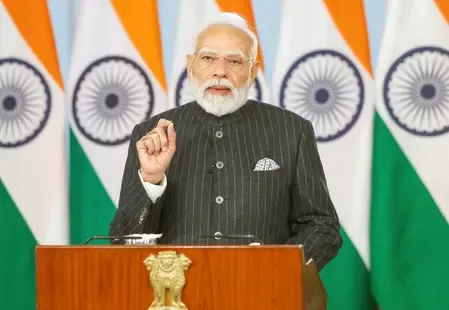What Impact Did Cloudbursts and Flash Floods Have on Himachal Pradesh?

Synopsis
Key Takeaways
- Three cloudbursts and flash floods reported in Himachal Pradesh.
- Eight bridges and 12 vehicles damaged.
- Multiple roads, including a national highway, blocked.
- Indian Army's rapid response averted further tragedy.
- Ongoing restoration and damage assessment efforts.
Shimla, Aug 14 (NationPress) On Thursday, Himachal Pradesh faced the wrath of nature with three cloudbursts and flash floods, in addition to two landslides and a tragic drowning incident. These events led to significant damage, including eight bridges and 12 vehicles, while also blocking numerous roads, notably a national highway, according to the State Emergency Operation Centre.
The affected areas span across Shimla, Sirmaur, Lahaul-Spiti, Kullu, and Kinnaur districts. Thankfully, there were no reported fatalities, although one individual is currently missing, feared to have drowned in the Parvati River within Kullu district.
In a remarkable display of bravery, the Indian Army responded swiftly to a potential disaster when a sudden flash flood struck Hojis Lungpa Nala in the mountainous terrain of Kinnaur.
This incident unfolded around 7 p.m. on Wednesday, triggered by a cloudburst in the higher elevations of the Rishi Dogri Valley. The deluge overwhelmed the bridge across the Sutlej River, resulting in one injury.
The site was an active road construction area managed by the CPWD towards Gangthang Bralam, as reported.
Prompted by an urgent call from the Superintendent of Police, the Army quickly deployed a humanitarian assistance and disaster relief (HADR) unit.
Facing treacherous currents, the team successfully reached the site and found four civilians stranded on the opposite bank. Working meticulously under challenging circumstances, the HADR team illuminated the area for night-time rescue efforts, guiding the stranded individuals to higher ground and transporting the injured person to the Regional Hospital in Reckong Peo, the district headquarters.
The Indian Army utilized its cutting-edge technology in the operation, including the logistics drone high altitude (LDHA) system, to deliver vital supplies, such as food and coconut water, across the floodwaters to assist the stranded civilians throughout the night.
In other areas, flooding in the Changreji rivulet in Tashigang, Kinnaur, caused damage to irrigation channels and pipelines.
A cloudburst in the Nanti Ganvi region of Rampur Upper Shimla necessitated evacuations, damaging several structures, while the collapse of a bridge severed access to multiple villages and three gram panchayats.
Additionally, a landslide in Khaltunala, Kotkhai, also within Shimla district, resulted in damage to parked vehicles.
In Kullu district, incidents included a drowning case at Chowki in Manikaran, a cloudburst in Bthad that swept away cottages and vehicles, and a flash flood at Kurpan Khad in Bagipul, though no major losses were reported, according to the State Emergency Operation Centre.
Flash floods near Jahalman and a cloudburst at Munni Nallah in Lahaul-Spiti caused road blockages and damage to a bridge abutment.
Flooding at Khurik has obstructed the National Highway 505.
A landslide in Rajgarh, Sirmaur district, resulted in the death of four cattle, damage to a cowshed, and the washing away of a parked car.
The government has stated that these disasters have led to the destruction of eight bridges, multiple road blockages, damage to 12 vehicles, six cow sheds, and four cottages. Efforts for restoration and damage assessment are currently underway across the impacted regions.









